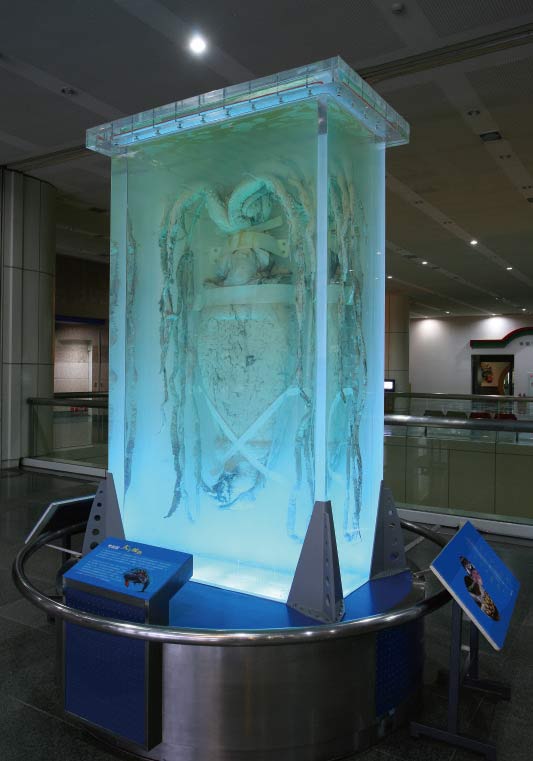Giant Squid
A giant squid specimen is displayed on the first floor of the Global Environment Hall. It is the largest vertically presented giant squid specimen in the world. Creating this display was extremely difficult. The base, acrylic case, and formalin solution weigh four tons. This specimen can be viewed from three sides including structures such as the ring of teeth along each suction cup and the funnel (water outlet).
This species of giant squid (Architeuthis dux Steenstrup, 1857) belongs to the Phylum Mollusca, Class Cephalopoda, Order Teuthida, and Family Architeuthidae. It measures 8.84 meters in length and 240 kilograms in weight. It was caught off the coast of New Zealand by researchers from the New Zealand National Institute of Water & Atmospheric Research and donated to this museum.

Its eyes are well-developed and its diet consists of fish and cephalopods, including those of the same and other species. Sperm whales are the giant squid’s natural enemies. Sperm whales dive down to giant squid habitats to hunt them. Scientists have found large numbers of giant squid beaks in the stomachs of sperm whales, confirming that the giant squid is an important food source for these whales. To date, not much is known about the life history of the giant squid. Every year from December to March they appear in shallow waters off the coast of New Zealand where they reproduce. From April, they begin to leave, eventually disappearing altogether. Perhaps they are migratory. However, their spawning grounds and other aspects of their life history remain unknown.